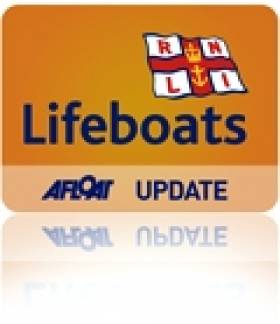Displaying items by tag: Hare Island
#RNLI - Three young German visitors were rescued by Galway RNLI after getting stranded on Hare Island in Galway Bay yesterday afternoon (Thursday 26 July).
The three students were trapped on the island after the tide came in shortly before 12.30pm.
A passer-by on the shore spotted the group and dialled 999 for assistance. Galway RNLI’s lifeboat was subsequently called to the scene and arrived within 10 minutes.
The students were completely surrounded by water when the lifeboat arrived to assist them on board. They were then taken to Galway Docks in the city, where they are staying. They did not require medical assistance.
The lifeboat crew on this callout were helm Sean King, Cathal Bryne, Greg Cullen and Olivia Byrne, who said: “This highlights the dangers of going out to Hare Island when the tide is coming in.
“These young men got completely cut off in a short space of time. Luckily a diligent observer on the shore came to their assistance and contacted the emergency services straight away.”
Strandings are not an uncommon occurrence at the tidal island, with similar incidents in 2010, 2013, 2016 and last September.
Stranded Students Rescued From Island By Galway RNLI
#RNLI - Galway RNLI came to the rescue of three students who got stranded on Hare Island yesterday afternoon (Monday 13 May) after getting caught in the tide off Ballyloughane Beach.
The two young women and young man, in their late teens/early 20s, had gone for a walk and were spotted waving from the island by a local resident who contacted the emergency services and Galway RNLI.
Conditions at the time (around 4pm) were changeable with heavy showers.
Three volunteer members of the inshore lifeboat crew were working in the vicinity of the station at the time and launched the boat in six minutes.
The three students were picked up safely and brought back to the lifeboat station at Galway Docks where they were warmed up and given tea. They did not require medical attention.
The lifeboat crew on this callout were helm David Oliver, Dara Oliver, David Badger and Olivia Byrne.
Lifeboat shore crew John Bryne said: "The three students did the right thing waiting on the island and not attempting to get off."
It's not the first time that people have been stranded by the incoming tide on Hare Island, as Galway RNLI were called to a similar incident in September 2010.































































